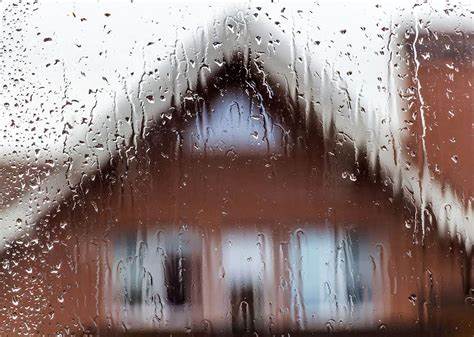
Condensation can be a real nuisance in any household, especially during the colder months. Those water droplets forming on your windows, walls, and other surfaces can lead to mould growth, structural damage, and health issues if you don’t address them. Here’s a hands-on guide to eliminating condensation in your house, featuring effective solutions from Brookvent.
Understanding Condensation
Before tackling the problem, it’s crucial to understand why condensation happens. Here are the main culprits:
1. High Humidity: Levels Everyday activities like cooking, showering, and even breathing add moisture to the air.
2. Temperature Differences: When warm, moist air hits cooler surfaces like windows and walls, condensation forms.
3. Poor Ventilation: Without proper ventilation, moist air gets trapped, increasing the chances of condensation.
If you want to find out more, here’s a useful article we found:
What is evaporation and condensation? – BBC Bitesize
Immediate Steps to Reduce Condensation
1. Ventilate Your Home: Open your windows regularly to let fresh air in and reduce humidity. Use extractor fans in kitchens and bathrooms to expel moist air.
2. Use a Dehumidifier: Dehumidifiers pull moisture from the air, significantly lowering indoor humidity.
3. Wipe Down Surfaces: Regularly wipe windows and other surfaces where condensation forms to prevent moisture build-up.
4. Dry Clothes Outside: Drying clothes indoors releases moisture into the air. Whenever possible, dry them outside.
Long-Term Solutions to Prevent Condensation
For a more permanent fix, consider these measures:
1. Insulate Your Home: Proper insulation helps keep indoor temperatures stable, reducing the likelihood of condensation on cold surfaces.
2. Upgrade Your Windows: Double or triple-glazed windows are more effective at maintaining indoor temperatures, thus reducing condensation.
3. Install Ventilation Systems: Mechanical ventilation systems can dramatically improve air circulation and moisture control in your home.
Brookvent Solutions for Condensation Control
Brookvent offers a range of innovative products designed to combat condensation effectively. Here’s how you can benefit from their solutions:
1. Brookvent Aircycle Range: These heat recovery ventilation (HRV) systems provide continuous ventilation, ensuring a steady flow of fresh air while recovering heat from the outgoing stale air. This not only improves indoor air quality but also helps maintain indoor temperatures, reducing the risk of condensation.
2. Brookvent Background Ventilators: These ventilators provide controlled ventilation without sacrificing energy efficiency. They allow a small but continuous flow of fresh air into the house, helping maintain optimal humidity levels and reduce condensation.
3. Brookvent Window Vents: Install these vents on your existing windows to enhance ventilation. They’re particularly useful in reducing window condensation by letting moist air escape while preventing drafts.
4. Brookvent MEV (Mechanical Extract Ventilation) Systems: These systems continuously extract air from multiple wet rooms (kitchens, bathrooms, etc.), providing consistent ventilation and significantly reducing humidity and condensation issues.
Practical Tips for Using Brookvent Products
Maximize the effectiveness of Brookvent products with these practical tips:
1. Proper Installation: Ensure all ventilation systems are correctly installed by a professional to guarantee optimal performance.
2. Regular Maintenance: Regularly clean and maintain your ventilation systems to keep them functioning efficiently. Brookvent products come with easy-to-follow maintenance guidelines.
3. Combine Solutions: For the best results, use Brookvent systems alongside other condensation control measures such as insulation and double-glazed windows.
Additional Tips for Managing Indoor Humidity
1. Use Exhaust Fans: Besides Brookvent systems, use exhaust fans in high-moisture areas like kitchens and bathrooms to expel humid air directly outside.
2. Cover Pots While Cooking: This simple step can significantly reduce the amount of moisture released into the air.
3. Keep Lids on Aquariums: If you have fish tanks, keeping them covered prevents additional moisture from entering the air.
4. Monitor Indoor Humidity: Use a hygrometer to monitor indoor humidity levels. Aim to keep it between 30-50% to minimize the risk of condensation.
The Role of Plants in Managing Humidity
While plants add beauty to your home, they can also contribute to indoor humidity. Choose plants that absorb moisture from the air, like Boston ferns, spider plants, and peace lilies, to help manage humidity levels naturally.
Addressing Condensation in Problem Areas
Certain areas of your home might be more prone to condensation. Here’s how to tackle them:
1. Bathrooms: Ensure adequate ventilation with Brookvent MEV systems or a high-quality extractor fan. Keep doors closed while showering and open windows afterward to let moisture escape.
2. Kitchens: Use Brookvent HRV systems to maintain a flow of fresh air and extract cooking fumes and moisture. Always use lids on pots and run the extractor fan while cooking.
3. Bedrooms: Bedrooms can accumulate moisture overnight due to breathing. Use a dehumidifier and ensure there is good air circulation. Brookvent window vents are particularly useful in these rooms.
Conclusion
Condensation can be a persistent and problematic issue, but with the right strategies and products, you can effectively manage it. Brookvent offers a range of innovative solutions designed to enhance ventilation, improve indoor air quality, and reduce condensation. By combining Brookvent products with other practical measures like proper insulation and regular maintenance, you can create a healthier, more comfortable living environment free from the problems associated with condensation.
For more information, click here to see our other blog related posts.
Contact our team on 02890616505, hello@brookvent.co.uk or Fill in our contact us form for more information!





